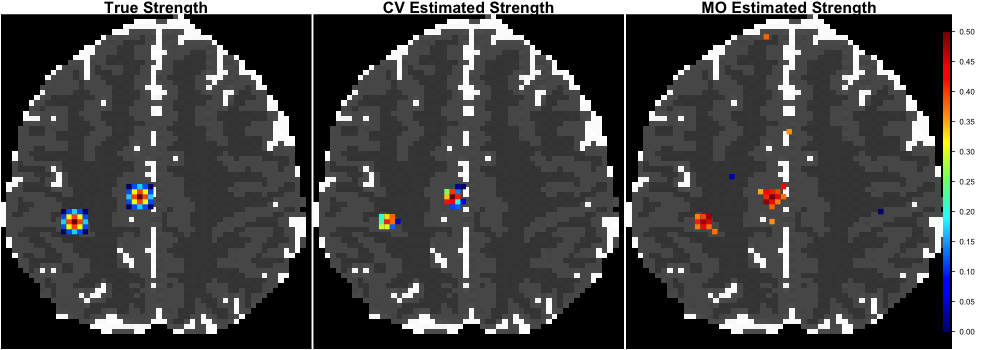 Physically realistic simulated data
Physically realistic simulated data
A Bayesian Variable Selection Approach Yields Improved Brain Activation From Complex-Valued fMRI
Abstract
Voxel functional magnetic resonance imaging (fMRI) time courses are complex-valued signalsgiving rise to magnitude and phase data. Nevertheless, most studies use only the magnitude signals and thus discard half of the data that could potentially contain important information. Methods that make use of complex-valued fMRI (CV-fMRI) data have been shown to lead to superior power in detecting active voxels when compared to magnitude-only methods, particularly for small signal-to-noise ratios. We present a new Bayesian variable selection approach for detecting brain activation at the voxel level from CV-fMRI data. We develop models with complex-valued spike-and-slab priors on the activation parameters that are able to combine the magnitude and phase information. We present a complex-valued EM variable selection algorithm that leads to fast detection at the voxel level in CV-fMRI slices and also consider full posterior inference via MCMC. Model performance is illustrated through extensive simulation studies, including the analysis of physically-based simulated CV-fMRI slices. Finally, we use the complex-valued Bayesian approach to detect active voxels in human CV-fMRI data from a healthy individual who performed unilateral finger tapping in a designed experiment. The proposed approach leads to activation in the expected motor-related brain regions and produces fewer spurious results than other methods for CV-fMRI.
More detail can easily be written here using Markdown and $\rm \LaTeX$ math code.